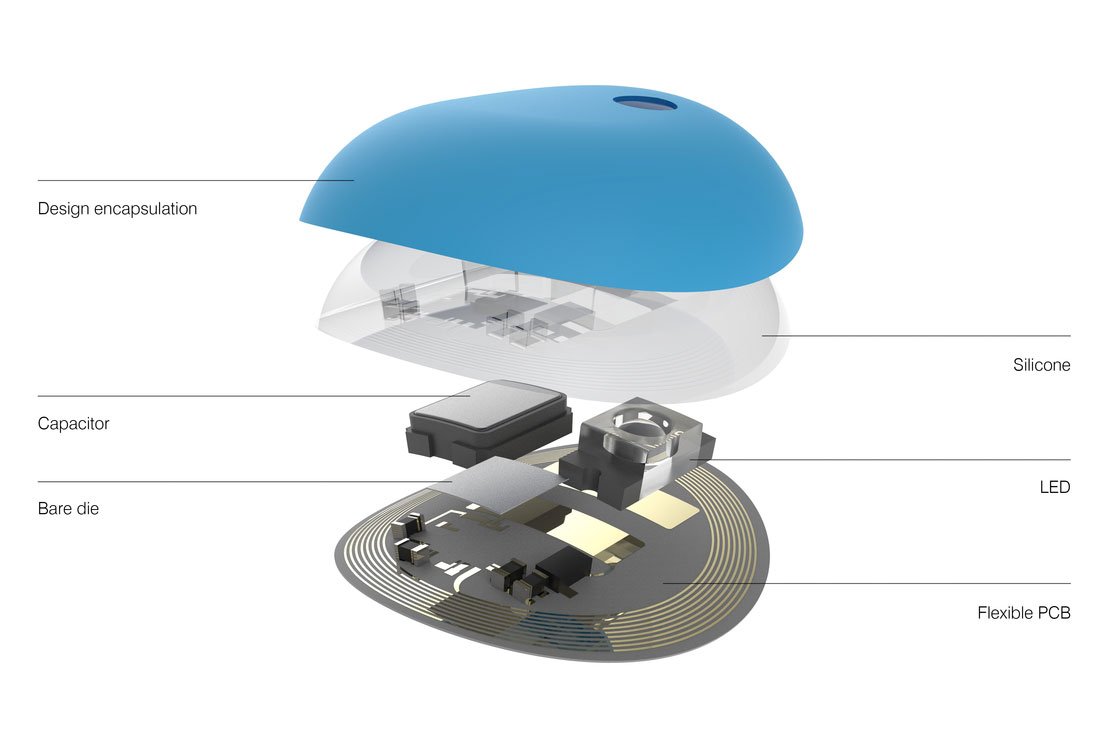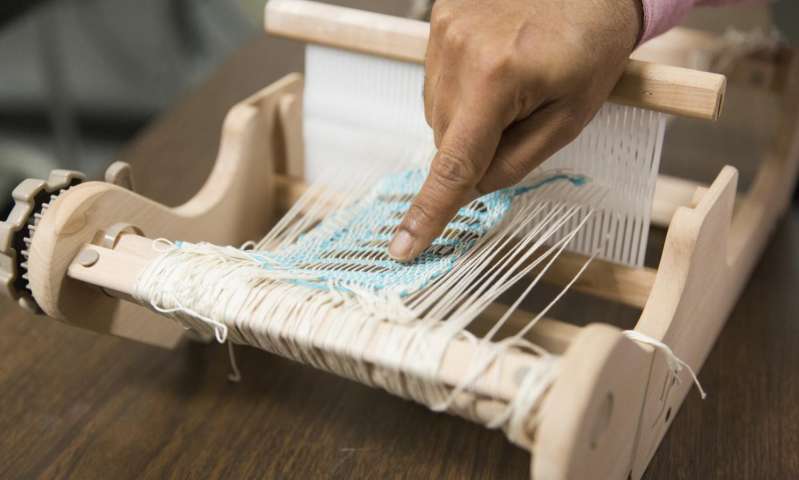After publishing a report on wearable technology in May 2016 (see my June 2, 2016 posting), Cientifica has published another wearable technology report, this one is titled, Smart Textiles and Wearables: Markets, Applications and Technologies. Here’s more about the latest report from the report order page,
“Smart Textiles and Wearables: Markets, Applications and Technologies” examines the markets for textile based wearable technologies, the companies producing them and the enabling technologies. This is creating a 4th industrial revolution for the textiles and fashion industry worth over $130 billion by 2025.
Advances in fields such as nanotechnology, organic electronics (also known as plastic electronics) and conducting polymers are creating a range of textile–based technologies with the ability to sense and react to the world around them. This includes monitoring biometric data such as heart rate, the environmental factors such as temperature and The presence of toxic gases producing real time feedback in the form of electrical stimuli, haptic feedback or changes in color.
The report identifies three distinct generations of textile wearable technologies.
First generation is where a sensor is attached to apparel and is the approach currently taken by major sportswear brands such as Adidas, Nike and Under Armour
Second generation products embed the sensor in the garment as demonstrated by products from Samsung, Alphabet, Ralph Lauren and Flex.
In third generation wearables the garment is the sensor and a growing number of companies including AdvanPro, Tamicare and BeBop sensors are making rapid progress in creating pressure, strain and temperature sensors.
Third generation wearables represent a significant opportunity for new and established textile companies to add significant value without having to directly compete with Apple, Samsung and Intel.
The report predicts that the key growth areas will be initially sports and wellbeing
followed by medical applications for patient monitoring. Technical textiles, fashion and entertainment will also be significant applications with the total market expected to rise to over $130 billion by 2025 with triple digit compound annual growth rates across many applications.
The rise of textile wearables also represents a significant opportunity for manufacturers of the advanced materials used in their manufacture. Toray, Panasonic, Covestro, DuPont and Toyobo are already suppling the necessary materials, while researchers are creating sensing and energy storage technologies, from flexible batteries to graphene supercapacitors which will power tomorrows wearables. The report details the latest advances and their applications.
This report is based on an extensive research study of the wearables and smart textile markets backed with over a decade of experience in identifying, predicting and sizing markets for nanotechnologies and smart textiles. Detailed market figures are given from 2016-2025, along with an analysis of the key opportunities, and illustrated with 139 figures and 6 tables.
The September 2016 report is organized differently and has a somewhat different focus from the report published in May 2016. Not having read either report, I’m guessing that while there might be a little repetition, you might better consider them to be companion volumes.
Here’s more from the September 2016 report’s table of contents which you can download from the order page (Note: The formatting has been changed),
SMART TEXTILES AND WEARABLES:
MARKETS, APPLICATIONS AND
TECHNOLOGIES
Contents 1
List of Tables 4
List of Figures 4
Introduction 8
How to Use This Report 8
Wearable Technologies and the 4Th Industrial Revolution 9
The Evolution of Wearable Technologies 10
Defining Smart Textiles 15
Factors Affecting The Adoption of Smart Textiles for Wearables 18
Cost 18
Accuracy 18
On Shoring 19
Power management 19
Security and Privacy 20
Markets 21
Total Market Growth and CAGR 21
Market Growth By Application 21
Adding Value To Textiles Through Technology 27
How Nanomaterials Add Functionality and Value 31
Business Models 33
Applications 35
Sports and Wellbeing 35
1st Generation Technologies 35
Under Armour Healthbox Wearables 35
Adidas MiCoach 36
Sensoria 36
EMPA’s Long Term Research 39
2nd Generation Technologies 39
Google’s Project Jacquard 39
Samsung Creative Lab 43
Microsoft Collaborations 44
Intel Systems on a Chip 44
Flex (Formerly Flextronics) and MAS Holdings 45
Jiobit 46
Asensei Personal Trainer 47
OmSignal Smart Clothing 48
Ralph Lauren PoloTech 49
Hexoskin Performance Management 50
Jabil Circuit Textile Heart Monitoring 51
Stretch Sense Sensors 52
NTT Data and Toray 54
Goldwin Inc. and DoCoMo 55
SupaSpot Inc Smart Sensors 55
Wearable Experiments and Brand Marketing 56
Wearable Life Sciences Antelope 57
Textronics NuMetrex 59
3rd Generation Technologies 60
AdvanPro Pressure Sensing Shoes 60
Tamicare 3D printed Wearables with Integrated Sensors 62
AiQ Smart Clothing Stainless Steel Yarns 64
Flex Printed Inks And Conductive Yarns 66
Sensing Tech Conductive Inks 67
EHO Textiles Body Motion Monitoring 68
Bebop Sensors Washable E-Ink Sensors 70
Fraunhofer Institute for Silicate Research Piezolectric Polymer
Sensors 71
CLIM8 GEAR Heated Textiles 74
VTT Smart Clothing Human Thermal Model 74
ATTACH (Adaptive Textiles Technology with Active Cooling and Heating) 76
Energy Storage and Generation 78
Intelligent Textiles Military Uniforms 78
BAE Systems Broadsword Spine 79
Stretchable Batteries 80
LG Chem Cable Batteries 81
Supercapacitors 83
Swinburne Graphene Supercapacitors 83
MIT Niobium Nanowire Supercapacitors 83
Energy Harvesting 86
Kinetic 86
StretchSense Energy Harvesting Kit 86
NASA Environmental Sensing Fibers 86
Solar 87
Powertextiles 88
Sphelar Power Corp Solar Textiles 88
Ohmatex and Powerweave 89
Fashion 89
1st Generation Technologies 92
Cute Circuit LED Couture 92
MAKEFASHION LED Couture 94
2nd Generation Technologies 94
Covestro Luminous Clothing 94
3rd Generation Technologies 96
The Unseen Temperature Sensitive Dyes 96
Entertainment 98
Wearable Experiments Marketing 98
Key Technologies 100
Circuitry 100
Conductive Inks for Fabrics 100
Conductive Ink For Printing On Stretchable Fabrics 100
Creative Materials Conductive Inks And Adhesives 100
Dupont Stretchable Electronic Inks 101
Aluminium Inks From Alink Co 101
Conductive Fibres 102
Circuitex Silver Coated Nylon 102
Textronics Yarns and Fibres 102
Novonic Elastic Conductive Yarn 103
Copper Coated Polyacrylonitrile (PAN) Fibres 103
Printed electronics 105
Covestro TPU Films for Flexible Circuits 105
Sensors 107
Electrical 107
Hitoe 107
Cocomi 108
Panasonic Polymer Resin 109
Cardiac Monitoring 110
Mechanical 113
Strain 113
Textile-Based Weft Knitted Strain Sensors 113
Chain Mail Fabric for Smart Textiles 113
Nano-Treatment for Conductive Fiber/Sensors 115
Piezoceramic materials 116
Graphene-Based Woven Fabric 117
Pressure Sensing 117
LG Innotek Flexible Textile Pressure Sensors 117
Hong Kong Polytechnic University Pressure Sensing Fibers 119
Conductive Polymer Composite Coatings 122
Printed Textile Sensors To Track Movement 125
Environment 127
Photochromic Textiles 127
Temperature 127
Sefar PowerSens 127
Gasses & Chemicals 127
Textile Gas Sensors 127
Energy 130
Storage 130
Graphene Supercapacitors 130
Niobium Nanowire Supercapacitors 130
Stretchy supercapacitors 132
Energy Generation 133
StretchSense Energy Harvesting Kit 133
Piezoelectric Or Thermoelectric Coated Fibres 134
Optical 137
Light Emitting 137
University of Manchester Electroluminescent Inks and Yarns 137
Polyera Wove 138
Companies Mentioned 141
List of Tables
Table 1 CAGR by application 22
Table 2 Value of market by application 2016-25 (millions USD) 24
Table 3 % market share by application 26
Table 4 CAGR 2016-25 by application 26
Table 5 Technology-Enabled Market Growth in Textile by Sector (2016-22) 28
Table 6 Value of nanomaterials by sector 2016-22 ($ Millions) 33
List of Figures
Figure 1 The 4th Industrial Revolution (World Economic Forum) 9
Figure 2 Block Diagram of typical MEMS digital output motion sensor: ultra
low-power high performance 3-axis “femto” accelerometer used in
fitness tracking devices. 11
Figure 3 Interior of Fitbit Flex device (from iFixit) 11
Figure 4 Internal layout of Fitbit Flex. Red is the main CPU, orange is the
BTLE chip, blue is a charger, yellow is the accelerometer (from iFixit) 11
Figure 5 Intel’s Curie processor stretches the definition of ‘wearable’ 12
Figure 6 Typical Textile Based Wearable System Components 13
Figure 7 The Chromat Aeros Sports Bra “powered by Intel, inspired by wind, air and flight.” 14
Figure 8 The Evolution of Smart textiles 15
Figure 9 Goldwin’s C2fit IN-pulse sportswear using Toray’s Hitoe 16
Figure 10 Sensoglove reads grip pressure for golfers 16
Figure 11 Textile Based Wearables Growth 2016-25(USD Millions) 21
Figure 12 Total market for textile based wearables 2016-25 (USD Millions) 22
Figure 13 Health and Sports Market Size 2016-20 (USD Millions) 23
Figure 14 Health and Sports Market Size 2016-25 (USD Millions) 23
Figure 15 Critical steps for obtaining FDA medical device approval 25
Figure 16 Market split between wellbeing and medical 2016-25 26
Figure 17 Current World Textile Market by Sector (2016) 27
Figure 18 The Global Textile Market By Sector ($ Millions) 27
Figure 19 Compound Annual Growth Rates (CAGR) by Sector (2016-25) 28
Figure 20 The Global Textile Market in 2022 29
Figure 21 The Global Textile Market in 2025 30
Figure 22 Textile Market Evolution (2012-2025) 30
Figure 23 Total Value of Nanomaterials in Textiles 2012-2022 ($ Millions) 31
Figure 24 Value of Nanomaterials in Textiles by Sector 2016-2025 ($ Millions) 32
Figure 25 Adidas miCoach Connect Heart Rate Monitor 36
Figure 26 Sensoria’s Hear[t] Rate Monitoring Garments . 37
Figure 27 Flexible components used in Google’s Project Jacquard 40
Figure 28 Google and Levi’s Smart Jacket 41
Figure 29 Embedded electronics Google’s Project Jacquard 42
Figure 30 Samsung’s WELT ‘smart’ belt 43
Figure 31 Samsung Body Compass at CES16 44
Figure 32 Lumo Run washable motion sensor 45
Figure 33 OMSignal’s Smart Bra 49
Figure 34 PoloTech Shirt from Ralph Lauren 50
Figure 35 Hexoskin Data Acquisition and Processing 51
Figure 36 Peak+™ Hear[t] Rate Monitoring Garment 52
Figure 37 StretchSense CEO Ben O’Brien, with a fabric stretch sensor 53
Figure 38 C3fit Pulse from Goldwin Inc 55
Figure 39 The Antelope Tank-Top 58
Figure 40 Sportswear with integrated sensors from Textronix 60
Figure 41 AdvanPro’s pressure sensing insoles 61
Figure 42 AdvanPro’s pressure sensing textile 62
Figure 43 Tamicare 3D Printing Sensors and Apparel 63
Figure 44 Smart clothing using stainless steel yarns and textile sensors from AiQ 65
Figure 45 EHO Smart Sock 69
Figure 46 BeBop Smart Car Seat Sensor 71
Figure 47 Non-transparent printed sensors from Fraunhofer ISC 73
Figure 48 Clim8 Intelligent Heat Regulating Shirt 74
Figure 49 Temperature regulating smart fabric printed at UC San Diego 76
Figure 50 Intelligent Textiles Ltd smart uniform 79
Figure 51 BAE Systems Broadsword Spine 80
Figure 52 LG Chem cable-shaped lithium-ion battery powers an LED display even when twisted and strained 81
Figure 53 Supercapacitor yarn made of niobium nanowires 84
Figure 54 Sphelar Textile 89
Figure 55 Sphelar Textile Solar Cells 89
Figure 56 Katy Perry wears Cute Circuit in 2010 91
Figure 57 Cute Circuit K Dress 93
Figure 58 MAKEFASHION runway at the Brother’s “Back to Business” conference, Nashville 2016 94
Figure 59 Covestro material with LEDs are positioned on formable films made from thermoplastic polyurethane (TPU). 95
Figure 60 Unseen headpiece, made of 4000 conductive Swarovski stones, changes color to correspond with localized brain activity 96
Figure 61 Eighthsense a coded couture piece. 97
Figure 62 Durex Fundawear 98
Figure 63 Printed fabric sensors from the University of Tokyo 100
Figure 64 Tony Kanaan’s shirt with electrically conductive nano-fibers 107
Figure 65 Panasonic stretchable resin technology 109
Figure 66 Nanoflex moniroring system 111
Figure 67 Knitted strain sensors 113
Figure 68 Chain Mail Fabric for Smart Textiles 114
Figure 69 Electroplated Fabric 115
Figure 70 LG Innotek flexible textile pressure sensors 118
Figure 71 Smart Footwear installed with fabric sensors. (Credit: Image courtesy of The Hong Kong Polytechnic University) 120
Figure 72 SOFTCEPTOR™ textile strain sensors 122
Figure 73 conductive polymer composite coating for pressure sensing 123
Figure 74 Fraunhofer ISC_ printed sensor 125
Figure 75 The graphene-coated yarn sensor. (Image: ETRI) 128
Figure 76 Supercapacitor yarn made of niobium nanowires 131
Figure 77 StretchSense Energy Harvesting Kit 134
Figure 78 Energy harvesting textiles at the University of Southampton 135
Figure 79 Polyera Wove Flexible Screen 139
If you compare that with the table of contents for the May 2016 report in my June 2, 2016 posting, you can see the difference.
Here’s one last tidbit, a Sept. 15, 2016 news item on phys.org highlights another wearable technology report,
Wearable tech, which was seeing sizzling sales growth a year ago [2015], is cooling this year amid consumer hesitation over new devices, a survey showed Thursday [Sept. 15, 2016].
The research firm IDC said it expects global sales of wearables to grow some 29.4 percent to some 103 million units in 2016.
That follows 171 percent growth in 2015, fueled by the launch of the Apple Watch and a variety of fitness bands.
“It is increasingly becoming more obvious that consumers are not willing to deal with technical pain points that have to date been associated with many wearable devices,” said IDC analyst Ryan Reith.
So-called basic wearables—including fitness bands and other devices that do not run third party applications—will make up the lion’s share of the market with some 80.7 million units shipped this year, according to IDC.
…
According to IDC, it seems that the short term does not promise the explosive growth of the previous year but that new generations of wearable technology, according to both IDC and Cientifica, offer considerable promise for the market.


